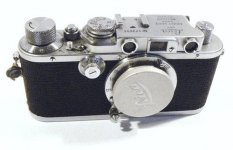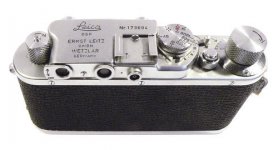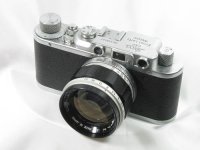Tijmendal
Young photog
Hi,
I just bought this camera and have got no clue what model it is. II, IIf or something different?
- Serial dates it from 1932
- Top speed is 1/1000th. (Other speeds are B, 20-1, 30, 40, 60, 100, 200, 500)
- Slow shutter dial is masked (like the IIf)
- Film advance is 'plain', without the ISO setting
Pics:


Thanks!
I just bought this camera and have got no clue what model it is. II, IIf or something different?
- Serial dates it from 1932
- Top speed is 1/1000th. (Other speeds are B, 20-1, 30, 40, 60, 100, 200, 500)
- Slow shutter dial is masked (like the IIf)
- Film advance is 'plain', without the ISO setting
Pics:


Thanks!








